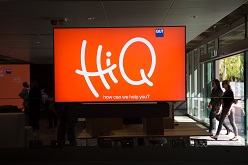[This post was originally made on a university-locked platform]
Expectation and First Impressions

When I first started this course, I was looking forward to learning more about areas of digital technology that I had heard about but had little experience of. Generally I’d say I’m aware of new technologies and changes in the digital sphere, but tend not to use or investigate them in detail if they don’t seem immediately useful to me in my day-to-day life.
I was apprehensive about the play and blogging activities. I had never been expected to learn in this way before in a university context. I was much more accustomed to the standard readings-lecture-tutorial-assignment structure, and was admittedly a bit skeptical that I would get the same learning outcomes from this difference style. But I came to appreciate that this participatory style was better suited to this topic.
The Learning Experience
As I completed more of the fortnightly activities, I was forced to participate in much of the digital technology that I had previously only passively observed or consumed. This really became clear during the Wikipedia editing activity – while I knew how Wikipedia was written and edited, it was not until I actually had to do some myself that I started to appreciate the scale of effort and dedication that goes into creating the site. I also realised that participating in these technologies was better suited for learning, since so many of the topics were user-driven – whether via users creating data, creating content, shaping online environments or through the democratisation of technology and online activity – being an active user was by far the best way to experience these technologies.
The most frustrating part of the learning activities was easily having to use the Blackboard blogging platform. The post editor seems to clunky and old-fashioned compared to others I’ve used, and it was unnecessarily difficult to get a well-formatted and user-friendly post together. Similarly, the lack of interconnectivity between each person’s blog was frustrating. I was interested to read what my peers were posting each week but it was tedious having to click into each individual’s blog to get an idea of what was being discussed. The ability to tag posts with topics, see all posts, tag other users in comments or search all blogs would have been much more useful and conducive to discussion.
Highlights and Omissions
The biggest highlight of this course for me was easily my visit to Brisbane Hackerspace. This was a fascinating place with a community that seemed engaged and welcoming. Something about the place also seemed to be in the same ‘spirit’ as libraries – I’m still thinking about how makerspaces and libraries could work together and hope to see (or maybe even make) developments in this area in the coming years.

I also enjoyed Dian’s lecture on the Internet of Things, and wish we could have had more time to consider this topic in depth, as it seems a genuinely different beast to the websites and apps that we’re accustomed to, deserving of more investigation.

In terms of downsides, I would have preferred to spend more time learning about how some new technologies are being applied in contemporary libraries and information professions. This could take the form of case studies, field trips or asking us to find examples of the application of new technologies. The recent launch of HiQ at QUT seems like an obvious candidate: How was it developed? Which technologies were or weren’t incorporated and why? How does something like HiQ fit in to overall trends in libraries and information spaces? As a project, it would have a lot of potential for learning about technologies in information practice, so it would have been great to have included it in this course.
Overall insights
The biggest message I took from this course is to keep an open mind about how new technologies can shape and improve information practice – but be mindful that every new technology will present new challenges. These days it’s cliche to talk about how ‘change is the new normal’ – but it’s genuinely true, particularly in information professions. Technology will not only be a constant source of disruption but also of opportunities to grow and expand what our profession is. If we can learn to take a balanced approach to new developments, not seeing them as either dangerous threats or magic bullets, we can change and guide our professions in the best possible ways.
